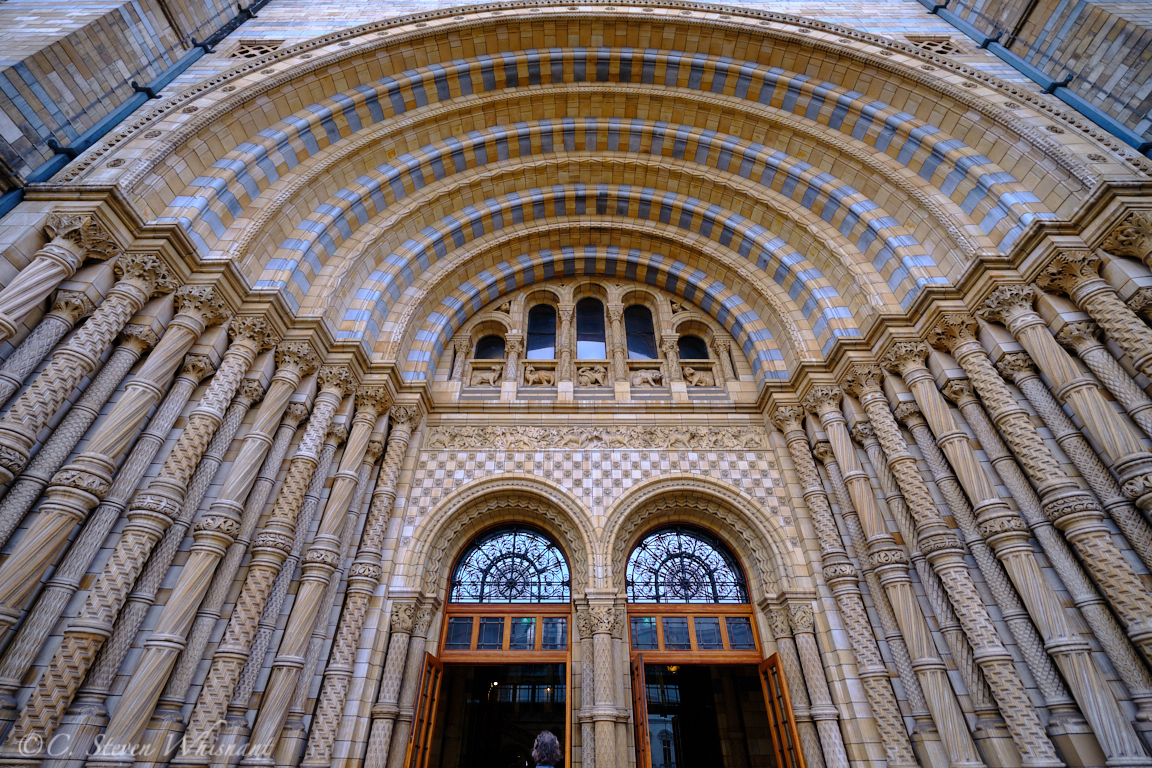The musings of itinerants exploring the world as house/pet sitters and enjoying every minute of it.
Tuesday, February 26, 2019
Natural History Museum
A trip to the Natural History Museum in South Kensington is always a treat. This time we went, as we try to do each year, to see the Wildlife Photographer of the Year exhibition. It is always a treat to see this collection of excellent images. Of course, photos of that exhibit are not allowed, but you can see the winners online. At the exhibit there are many more, some of which, I think, are the better images. In the eye of the beholder, eh?
But the parts I can photograph form their own kind of art. I have always found the building itself to be designed very much like a cathedral. From the front door, shown above, to chapel like alcoves off the main entrance hall.
In the main hallway there is now a Blue Whale skeleton suspended from the ceiling. the arches, columns, and chapel-like alcoves of multicolored stone create a special place to see and learn about the world around us.
A perennial favorite are the fossil animals. Here is a Rhomaleosaurus cramptoni, a Pliosauroid that was discovered by Mary Anning. She was a remarkable woman and well worth the investment of time in reading a biography.
Fortunately, we arrived not too long after the doors opened and I was able to get a shot of this cast of this large specimen without people in the way. By the time we got out of the photography exhibit, this was no longer possible.
One of my all-time favorites is the skeleton of the Stegosaurus in the Earth Hall. It is the most intact such skeleton ever found. There are lots of people, colored lights, and distractions around it. With a little patience, I have converted it to black and white to remove the colored lights and completely underexposed all the background to remove all the visual distractions. The result is a lone dinosaur that seems to have just come down the stairs to say hello.
I'm quite sure that with a brain the size of this beast, he/she never imagined that one day, a few hundred million years later, he/she would be famous.
Subscribe to:
Post Comments (Atom)




No comments:
Post a Comment
We enjoy hearing from our readers.